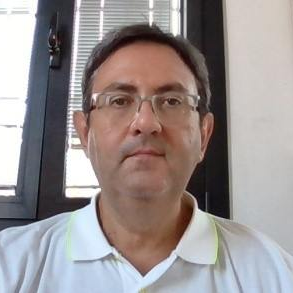Integrated Research for Cultural Heritage Stone Materials
A special issue of Minerals (ISSN 2075-163X).
Deadline for manuscript submissions: closed (31 May 2022) | Viewed by 7083
Special Issue Editors
Interests: applied geophysics; non-destructive diagnostics for monuments; geophysical–petrographical characterization of stone materials
Special Issues, Collections and Topics in MDPI journals
Interests: geodesy; terrestrial laser scanner (TLS); structure from motion (SfM); close-range photogrammetry (CRP); GNSS; DinSAR; gravimetry
Special Issues, Collections and Topics in MDPI journals
Special Issue Information
Dear Colleagues,
This Special Issue aims to present topics of integrated research on the characterization of stone for the diagnostics of monument degradation and is addressed to a large research audience. The integration of different types of complementary information can greatly improve the diagnostic process on the conservation state of building stone materials. Stone materials characterization and the knowledge of rock properties and their correlation are crucial in the network of applied geoscience and related engineering disciplines aimed at the protection and conservation of monuments. The diagnostic process of stone material decay is very complex and cannot be described by any single discipline. The prevention and rehabilitation of monumental structures can only be successful by combining different methodologies. The issue of multidisciplinarity in the nondestructive testing of monuments and in building stone material characterization is of great importance and multifaceted and deserves to be carefully addressed. Papers dealing with the description of new techniques and the integrated approach for the evaluation of the conservation state of building stone materials are greatly welcome.
Dr. Giuseppe Casula
Dr. Silvana Fais
Dr. Paola Ligas
Guest Editors
Manuscript Submission Information
Manuscripts should be submitted online at www.mdpi.com by registering and logging in to this website. Once you are registered, click here to go to the submission form. Manuscripts can be submitted until the deadline. All submissions that pass pre-check are peer-reviewed. Accepted papers will be published continuously in the journal (as soon as accepted) and will be listed together on the special issue website. Research articles, review articles as well as short communications are invited. For planned papers, a title and short abstract (about 100 words) can be sent to the Editorial Office for announcement on this website.
Submitted manuscripts should not have been published previously, nor be under consideration for publication elsewhere (except conference proceedings papers). All manuscripts are thoroughly refereed through a single-blind peer-review process. A guide for authors and other relevant information for submission of manuscripts is available on the Instructions for Authors page. Minerals is an international peer-reviewed open access monthly journal published by MDPI.
Please visit the Instructions for Authors page before submitting a manuscript. The Article Processing Charge (APC) for publication in this open access journal is 2400 CHF (Swiss Francs). Submitted papers should be well formatted and use good English. Authors may use MDPI's English editing service prior to publication or during author revisions.
Keywords
- diagnostics on monuments
- characterization of stone materials
- thin section of rocks
- rock properties
- testing
- multidisciplinarity, integrated approach







